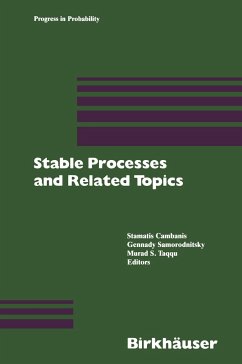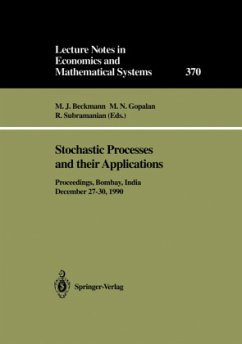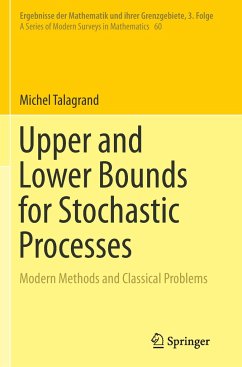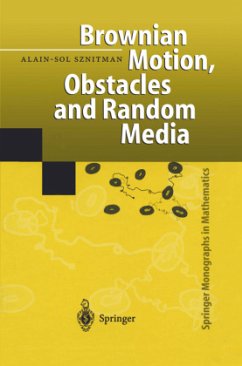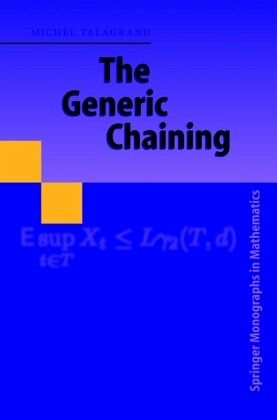
The Generic Chaining
Upper and Lower Bounds of Stochastic Processes

PAYBACK Punkte
38 °P sammeln!
Author's Note: The material of this book has been reworked and expanded with a lot more detail and published in the author's 2014 book "Upper and Lower Bounds for Stochastic Processes" (Ergebnisse Vol. 60, ISBN 978-3-642-54074-5). That book is much easier to read and covers everything that is in "The Generic Chaining" book in a more detailed and comprehensible way. ____________What is the maximum level a certain river is likely to reach over the next 25 years? (Having experienced three times a few feet of water in my house, I feel a keen personal interest in this question. ) There are many que...
Author's Note:
The material of this book has been reworked and expanded with a lot more detail and published in the author's 2014 book "Upper and Lower Bounds for Stochastic Processes" (Ergebnisse Vol. 60, ISBN 978-3-642-54074-5). That book is much easier to read and covers everything that is in "The Generic Chaining" book in a more detailed and comprehensible way.
____________What is the maximum level a certain river is likely to reach over the next 25 years? (Having experienced three times a few feet of water in my house, I feel a keen personal interest in this question. ) There are many questions of the same nature: what is the likely magnitude of the strongest earthquake to occur during the life of a planned building, or the speed of the strongest wind a suspension bridge will have to stand? All these situations can be modeled in the same manner. The value X of the quantity of interest (be it water t level or speed of wind) at time t is a random variable. What can be said about the maximum value of X over a certain range of t? t A collection of random variables (X ), where t belongs to a certain index t set T, is called a stochastic process, and the topic of this book is the study of the supremum of certain stochastic processes, and more precisely to ?nd upper and lower bounds for the quantity EsupX . (0. 1) t t?T Since T might be uncountable, some care has to be taken to de?ne this quantity. For any reasonable de?nition of Esup X we have t t?T EsupX =sup{EsupX ; F?T,F ?nite} , (0. 2) t t t?T t?F an equality that we will take as the de?nition of the quantity Esup X . t t?T Thus, the crucial case for the estimation of the quantity (0.
The material of this book has been reworked and expanded with a lot more detail and published in the author's 2014 book "Upper and Lower Bounds for Stochastic Processes" (Ergebnisse Vol. 60, ISBN 978-3-642-54074-5). That book is much easier to read and covers everything that is in "The Generic Chaining" book in a more detailed and comprehensible way.
____________What is the maximum level a certain river is likely to reach over the next 25 years? (Having experienced three times a few feet of water in my house, I feel a keen personal interest in this question. ) There are many questions of the same nature: what is the likely magnitude of the strongest earthquake to occur during the life of a planned building, or the speed of the strongest wind a suspension bridge will have to stand? All these situations can be modeled in the same manner. The value X of the quantity of interest (be it water t level or speed of wind) at time t is a random variable. What can be said about the maximum value of X over a certain range of t? t A collection of random variables (X ), where t belongs to a certain index t set T, is called a stochastic process, and the topic of this book is the study of the supremum of certain stochastic processes, and more precisely to ?nd upper and lower bounds for the quantity EsupX . (0. 1) t t?T Since T might be uncountable, some care has to be taken to de?ne this quantity. For any reasonable de?nition of Esup X we have t t?T EsupX =sup{EsupX ; F?T,F ?nite} , (0. 2) t t t?T t?F an equality that we will take as the de?nition of the quantity Esup X . t t?T Thus, the crucial case for the estimation of the quantity (0.







